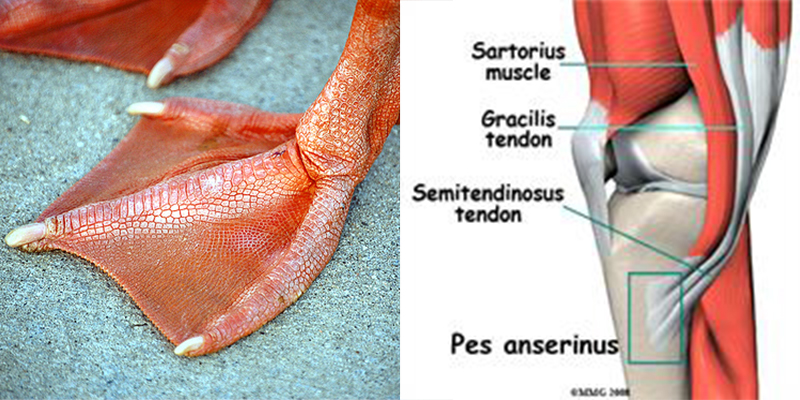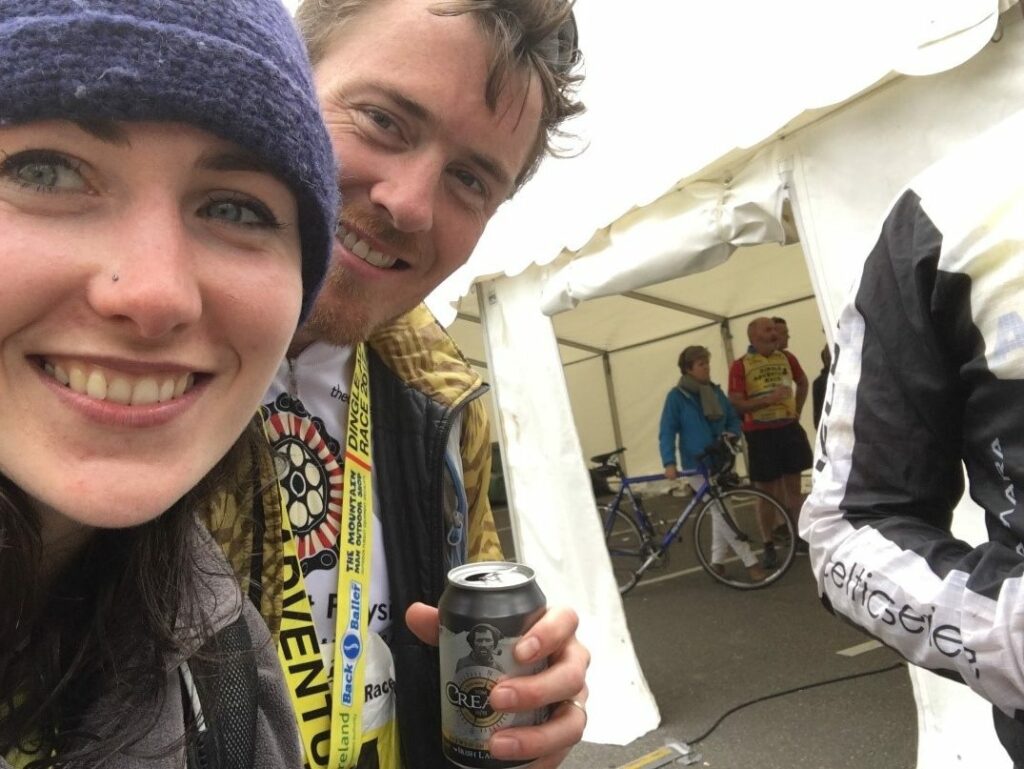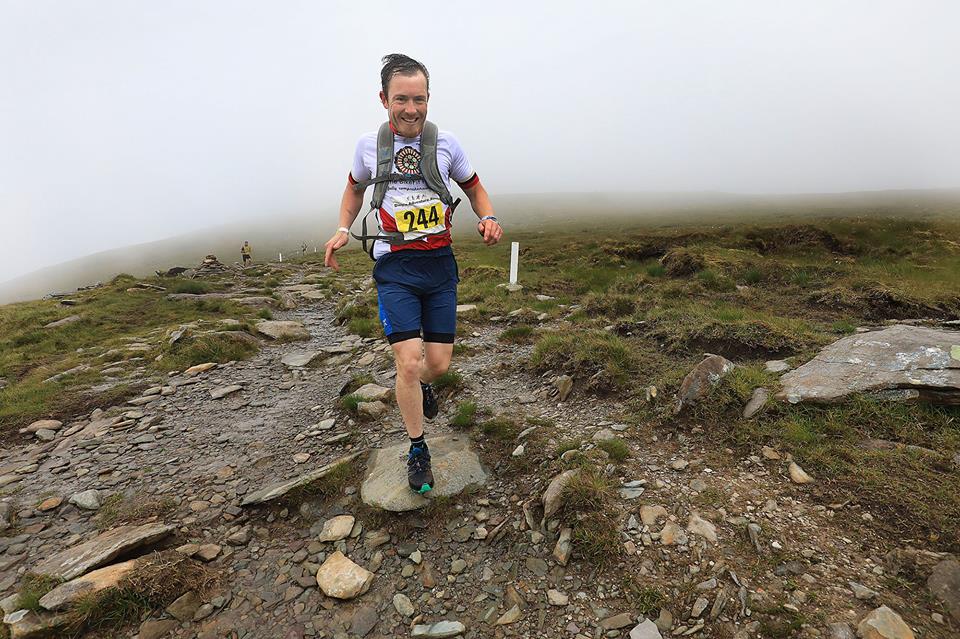A lesson (at my expense!) for future adventure racers
A Physio’s Feedback.
I write this now, exactly 6 months to the day that I over-cooked my tendons on mount Brandon! Most days of my week are made up of chatting to patients about a very important topic called load management. This basically boils down to a simple rule to follow which is “Don’t shock your system, fool it into thinking that nothing has changed”. Did I practice what I preach? No, not at all. My body reminded my brain of my mistake for the bones of nine weeks after the DAR, and only then did my goose’s foot calm down entirely.
If after reading this first paragraph, you find yourself confused and questioning the writer’s sanity, all will be revealed in what I hope you will find to be an interesting, educational and light-hearted article on preparing “properly” for an adventure race.
I’d like to explain the goose’s foot thingy first, just so that we can rule out any Nazi Germany connotations or animal cruelty for that matter! The goose’s foot, or its latin name “Pes anserinus” is the attachment point for three tendons in the body. They attach to the inside of the knee.

The goose’s foot (supposedly shaped like one) makes itself clearly heard when it is rightly pissed off. I’ll get to that bit later.
This was my second attempt at the DAR, the first time was back in 2011. This year was different in that I challenged my wife to a duel. We were going to compare times, and Aisling had the luxury of subtracting 40 fine minutes from her total time against mine. Although neither of us were doing much training (mistake number one), I felt overly confident in the cycling department. Yes, the bike was going to deliver me from defeat. I didn’t hold the same belief in my fell running skills – Ash has an innate ability to run downhill, it must be her Kerry connection. She was born into a sheep rearing family with a mountain as their back garden. The wager was made, the loser would have to drive both parties home to Glencar after the race. Anyone who knows DAR, knows that there’s no shortage of Tom Crean’s beer cans flying around the finish line and how the magical Dingle vibe takes over once you’re down from the hill.

Saturday 10th of June 2017 was a windy one to be fair, and with this came sad news. The organisers had to cancel the kayak section for safety reasons. I was semi-counting on the kayak section to give me an edge over my competitive other half, even though she occasionally brings up her certificate in kayaking from Cappanalea in 1999!
Recall mistake number one: not much training done. I realise that I am not unearthing a new discovery in that not training enough is a mistake. I also realise that it is very, very common in the world of amateur endurance sports. Sure, you’ll hear it from the punters on the morning of the race, ‘ah I haven’t trained enough for this’, much like not doing enough study for the English paper 2 in the Leaving Cert. I want to get across what is happening to the tendons in particular when you push your body into unknown territory without sufficient gradual exposure.
Tendons are strong, in fact they are gram for gram stronger than steel. Their role is to connect your muscles to the bone. In order to do this role effectively, they need to be able to tolerate load/force coming in from the muscle pulling on its anchor site. Now imagine the tendons in your legs as your ex-partner! The same ex who wanted to go to the same restaurant, eat the same food, wear the same jacket and go to bed at the same time. You see, tendons by nature, do not like sudden change. They’re great at managing load once it is kept pretty consistent. Or, you can trick them into thinking that nothing has changed by gradually increasing the load over time. The same way you changed the time on your ex’s watch so they would stay up later to watch a movie! In that instance, it would be wise to only bring the time back by a little in case they smell a rat. Same story for tendons – if they smell vermin, they may react and give you a painful wake up call.
Sometimes, the tendons are able to adapt to a sudden increase in load, improve their structure and don’t make a peep. Other times, they freak out and slap you across the face. A lot depends on your habitual levels of activity and types of activity. If you only ever go for a run at the weekends and sit at your day job for the weekdays, then the load absorbing qualities of your tendons will simply match that level of demand, putting you at high risk of tendon tantrums if you expose them to new loads. If you do a moderate amount of flat running, a lot of cycling but no mountain running, as was the case with me, then your tendons will struggle to manage the new, unfamiliar load/force of running downhill. As was the case with me! I hope this way of explaining load management will better inform readers to introduce new activities gradually. The couch to 5k programme is a prime example of this.
Back to the race, everything was going beautifully. The bike section went well, I managed to build a nice gap between myself and herself. Then came Mount Brandon. No bother with the going up bit, just get the head down and lunge your way up till you see the cross. Actually, that was almost an impossibility on the day, it was like a war-zone up there. I can remember staggering across to a brave official at the top, who shouted in my right ear to stay close to the white stakes on the way down. It’s very difficult to see white stakes in a white out! I’m exaggerating a bit, but for anyone reading who was up there that day, I’m sure you’ll agree, it was a wild one!

I started the descent full of beans, bouncing around like a wasp in a glasshouse. Half way down, I noticed slight soreness to the inside of my right knee. Noticeably, my right leg, the dominant one, was certainly taking on more of the jumps compared to the left one. When you annoy your tendons, they don’t let you know there and then like a torn muscle would. They tend to wait until that evening or the next morning, lulling you into a false sense of achievement and accomplishment at the finish line before bringing you back down to earth and into a physio’s clinic to find out what’s wrong with your knee.
For the next 3 or 4 weeks, I struggled to bend my knee. This however didn’t take away from the glory of winning! Even though Aisling didn’t take home the bacon, she arrived at the finish line battered and bloodied and proud. Although, at the time of the photo, she didn’t know that she lost!

I couldn’t bend my knee fully because this stretched the tendons and that’s another thing angry tendons don’t like, to be stretched. Next time your Achilles gives you pain, please don’t stretch it. I was another 4-5 weeks of very gentle and low volume jogging before gradually bringing up the speed and distance.
The up and coming challenge is Quest Kenmare on the 10th of March next year. This time there will be 6 of us all vying for top position. I started my training last month, slowly introducing downhill running and hopping into my routine so that I don’t wake the Goose again!
John Phelan
MSc Physio, BSc Nutritional Science
www.lifefitphysio.ie



